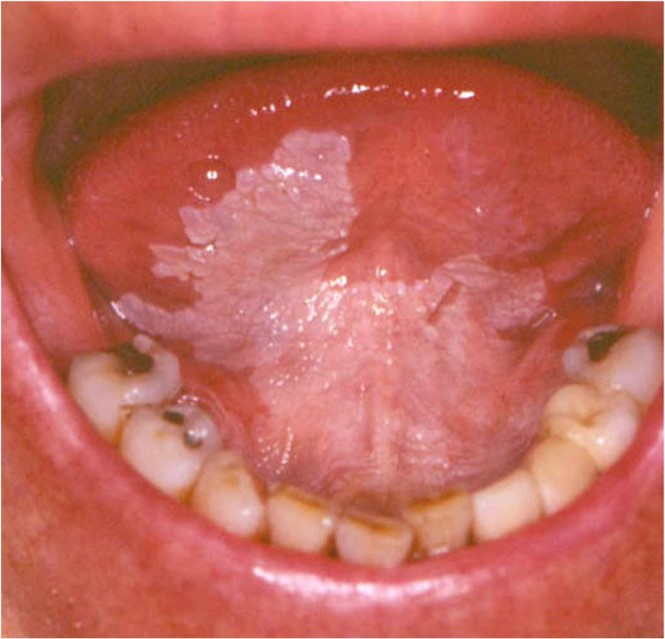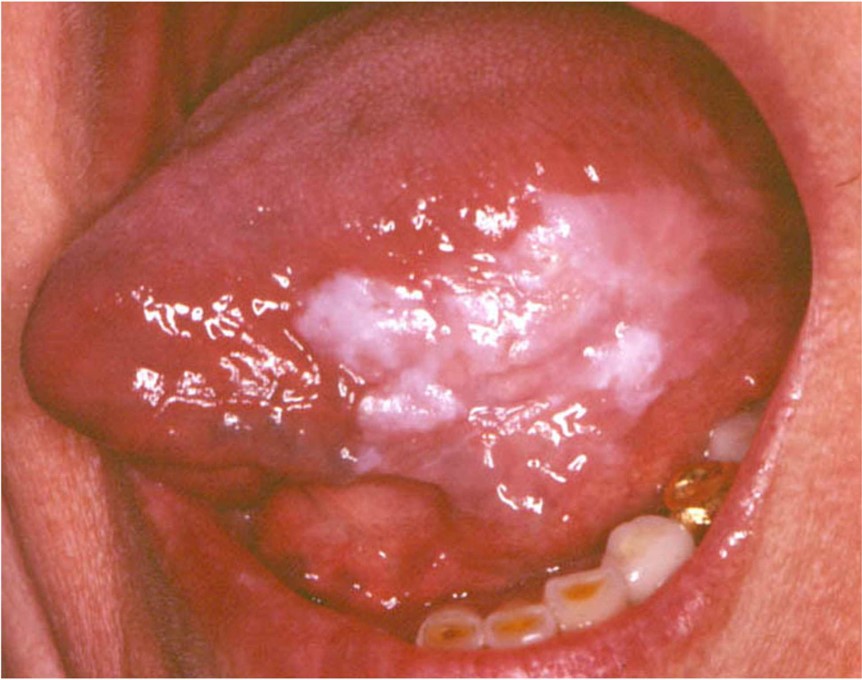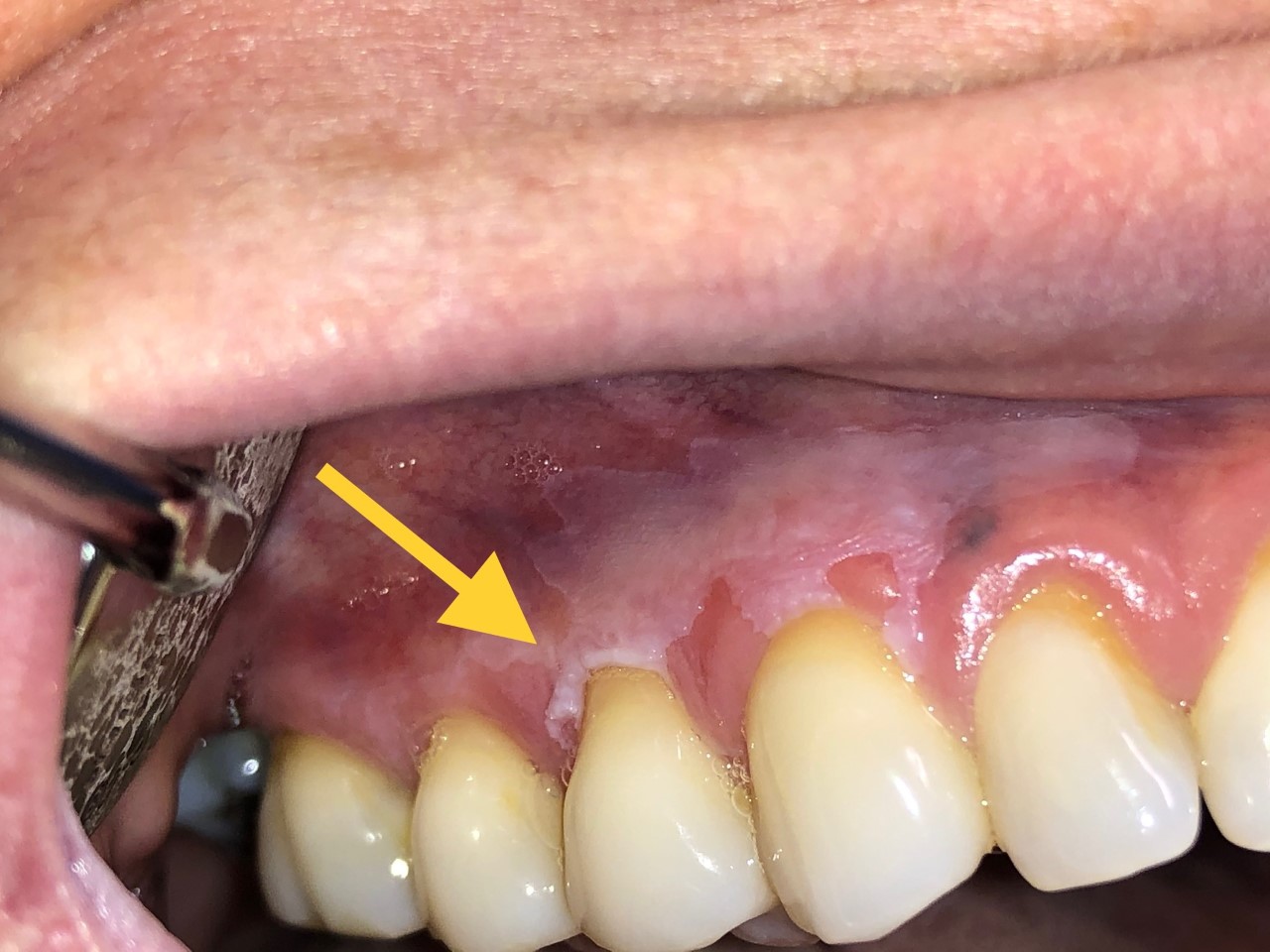[1]
Papadiochou S, Papadiochos I, Perisanidis C, Papadogeorgakis N. Medical practitioners' educational competence about oral and oropharyngeal carcinoma: a systematic review and meta-analysis. The British journal of oral & maxillofacial surgery. 2020 Jan:58(1):3-24. doi: 10.1016/j.bjoms.2019.08.007. Epub 2019 Nov 27
[PubMed PMID: 31785865]
Level 1 (high-level) evidence
[3]
Warnakulasuriya S, Johnson NW, van der Waal I. Nomenclature and classification of potentially malignant disorders of the oral mucosa. Journal of oral pathology & medicine : official publication of the International Association of Oral Pathologists and the American Academy of Oral Pathology. 2007 Nov:36(10):575-80
[PubMed PMID: 17944749]
[4]
Maymone MBC, Greer RO, Kesecker J, Sahitya PC, Burdine LK, Cheng AD, Maymone AC, Vashi NA. Premalignant and malignant oral mucosal lesions: Clinical and pathological findings. Journal of the American Academy of Dermatology. 2019 Jul:81(1):59-71. doi: 10.1016/j.jaad.2018.09.060. Epub 2018 Nov 14
[PubMed PMID: 30447325]
[5]
Mccormick NJ, Thomson PJ, Carrozzo M. The Clinical Presentation of Oral Potentially Malignant Disorders. Primary dental journal. 2016 Feb 1:5(1):52-63
[PubMed PMID: 29029654]
[6]
Wetzel SL, Wollenberg J. Oral Potentially Malignant Disorders. Dental clinics of North America. 2020 Jan:64(1):25-37. doi: 10.1016/j.cden.2019.08.004. Epub
[PubMed PMID: 31735231]
[7]
Kusiak A, Maj A, Cichońska D, Kochańska B, Cydejko A, Świetlik D. The Analysis of the Frequency of Leukoplakia in Reference of Tobacco Smoking among Northern Polish Population. International journal of environmental research and public health. 2020 Sep 22:17(18):. doi: 10.3390/ijerph17186919. Epub 2020 Sep 22
[PubMed PMID: 32971842]
[8]
Grady D, Greene J, Daniels TE, Ernster VL, Robertson PB, Hauck W, Greenspan D, Greenspan J, Silverman S Jr. Oral mucosal lesions found in smokeless tobacco users. Journal of the American Dental Association (1939). 1990 Jul:121(1):117-23
[PubMed PMID: 2370378]
[9]
Thomas SJ, Harris R, Ness AR, Taulo J, Maclennan R, Howes N, Bain CJ. Betel quid not containing tobacco and oral leukoplakia: a report on a cross-sectional study in Papua New Guinea and a meta-analysis of current evidence. International journal of cancer. 2008 Oct 15:123(8):1871-6. doi: 10.1002/ijc.23739. Epub
[PubMed PMID: 18688850]
Level 2 (mid-level) evidence
[10]
de la Cour CD, Sperling CD, Belmonte F, Syrjänen S, Kjaer SK. Human papillomavirus prevalence in oral potentially malignant disorders: Systematic review and meta-analysis. Oral diseases. 2021 Apr:27(3):431-438. doi: 10.1111/odi.13322. Epub 2020 Mar 30
[PubMed PMID: 32144837]
Level 1 (high-level) evidence
[11]
Kreimer AR, Clifford GM, Boyle P, Franceschi S. Human papillomavirus types in head and neck squamous cell carcinomas worldwide: a systematic review. Cancer epidemiology, biomarkers & prevention : a publication of the American Association for Cancer Research, cosponsored by the American Society of Preventive Oncology. 2005 Feb:14(2):467-75
[PubMed PMID: 15734974]
Level 1 (high-level) evidence
[12]
Mello FW, Miguel AFP, Dutra KL, Porporatti AL, Warnakulasuriya S, Guerra ENS, Rivero ERC. Prevalence of oral potentially malignant disorders: A systematic review and meta-analysis. Journal of oral pathology & medicine : official publication of the International Association of Oral Pathologists and the American Academy of Oral Pathology. 2018 Aug:47(7):633-640. doi: 10.1111/jop.12726. Epub 2018 Jun 6
[PubMed PMID: 29738071]
Level 1 (high-level) evidence
[13]
Petti S. Pooled estimate of world leukoplakia prevalence: a systematic review. Oral oncology. 2003 Dec:39(8):770-80
[PubMed PMID: 13679200]
Level 1 (high-level) evidence
[14]
Silverman S Jr, Gorsky M, Lozada F. Oral leukoplakia and malignant transformation. A follow-up study of 257 patients. Cancer. 1984 Feb 1:53(3):563-8
[PubMed PMID: 6537892]
[15]
van der Waal I, Schepman KP, van der Meij EH, Smeele LE. Oral leukoplakia: a clinicopathological review. Oral oncology. 1997 Sep:33(5):291-301
[PubMed PMID: 9415326]
[16]
van der Waal I. Oral leukoplakia, the ongoing discussion on definition and terminology. Medicina oral, patologia oral y cirugia bucal. 2015 Nov 1:20(6):e685-92
[PubMed PMID: 26449439]
[17]
van der Meij EH, Mast H, van der Waal I. The possible premalignant character of oral lichen planus and oral lichenoid lesions: a prospective five-year follow-up study of 192 patients. Oral oncology. 2007 Sep:43(8):742-8
[PubMed PMID: 17112770]
[18]
Passi D, Bhanot P, Kacker D, Chahal D, Atri M, Panwar Y. Oral submucous fibrosis: Newer proposed classification with critical updates in pathogenesis and management strategies. National journal of maxillofacial surgery. 2017 Jul-Dec:8(2):89-94. doi: 10.4103/njms.NJMS_32_17. Epub
[PubMed PMID: 29386809]
[19]
Farah CS, Woo SB, Zain RB, Sklavounou A, McCullough MJ, Lingen M. Oral cancer and oral potentially malignant disorders. International journal of dentistry. 2014:2014():853479. doi: 10.1155/2014/853479. Epub 2014 May 7
[PubMed PMID: 24891850]
[20]
Chuang SL, Wang CP, Chen MK, Su WW, Su CW, Chen SL, Chiu SY, Fann JC, Yen AM. Malignant transformation to oral cancer by subtype of oral potentially malignant disorder: A prospective cohort study of Taiwanese nationwide oral cancer screening program. Oral oncology. 2018 Dec:87():58-63. doi: 10.1016/j.oraloncology.2018.10.021. Epub 2018 Oct 24
[PubMed PMID: 30527244]
[21]
Cheng YS,Gould A,Kurago Z,Fantasia J,Muller S, Diagnosis of oral lichen planus: a position paper of the American Academy of Oral and Maxillofacial Pathology. Oral surgery, oral medicine, oral pathology and oral radiology. 2016 Sep;
[PubMed PMID: 27401683]
[22]
Katsanos KH, Roda G, Brygo A, Delaporte E, Colombel JF. Oral Cancer and Oral Precancerous Lesions in Inflammatory Bowel Diseases: A Systematic Review. Journal of Crohn's & colitis. 2015 Nov:9(11):1043-52. doi: 10.1093/ecco-jcc/jjv122. Epub 2015 Jul 10
[PubMed PMID: 26163301]
Level 1 (high-level) evidence
[23]
Koff JL, Waller EK. Improving cancer-specific outcomes in solid organ transplant recipients: Where to begin? Cancer. 2019 Mar 15:125(6):838-842. doi: 10.1002/cncr.31963. Epub 2019 Jan 9
[PubMed PMID: 30624770]
[24]
Lavanya N, Jayanthi P, Rao UK, Ranganathan K. Oral lichen planus: An update on pathogenesis and treatment. Journal of oral and maxillofacial pathology : JOMFP. 2011 May:15(2):127-32. doi: 10.4103/0973-029X.84474. Epub
[PubMed PMID: 22529568]
[25]
Villa A, Woo SB. Leukoplakia-A Diagnostic and Management Algorithm. Journal of oral and maxillofacial surgery : official journal of the American Association of Oral and Maxillofacial Surgeons. 2017 Apr:75(4):723-734. doi: 10.1016/j.joms.2016.10.012. Epub 2016 Oct 26
[PubMed PMID: 27865803]
[26]
Holmstrup P, Vedtofte P, Reibel J, Stoltze K. Oral premalignant lesions: is a biopsy reliable? Journal of oral pathology & medicine : official publication of the International Association of Oral Pathologists and the American Academy of Oral Pathology. 2007 May:36(5):262-6
[PubMed PMID: 17448135]
[27]
Arduino PG, Lodi G, Cabras M, Macciotta A, Gambino A, Conrotto D, Karimi D, Haddad GE, Carbone M, Broccoletti R. A Randomized Controlled Trial on Efficacy of Surgical Excision of Nondysplastic Leukoplakia to Prevent Oral Cancer. Cancer prevention research (Philadelphia, Pa.). 2021 Feb:14(2):275-284. doi: 10.1158/1940-6207.CAPR-20-0234. Epub 2020 Sep 21
[PubMed PMID: 32958584]
Level 1 (high-level) evidence
[28]
Lodi G, Franchini R, Warnakulasuriya S, Varoni EM, Sardella A, Kerr AR, Carrassi A, MacDonald LC, Worthington HV. Interventions for treating oral leukoplakia to prevent oral cancer. The Cochrane database of systematic reviews. 2016 Jul 29:7(7):CD001829. doi: 10.1002/14651858.CD001829.pub4. Epub 2016 Jul 29
[PubMed PMID: 27471845]
Level 1 (high-level) evidence
[29]
Lodi G, Porter S. Management of potentially malignant disorders: evidence and critique. Journal of oral pathology & medicine : official publication of the International Association of Oral Pathologists and the American Academy of Oral Pathology. 2008 Feb:37(2):63-9. doi: 10.1111/j.1600-0714.2007.00575.x. Epub
[PubMed PMID: 18197849]
[30]
Iocca O, Sollecito TP, Alawi F, Weinstein GS, Newman JG, De Virgilio A, Di Maio P, Spriano G, Pardiñas López S, Shanti RM. Potentially malignant disorders of the oral cavity and oral dysplasia: A systematic review and meta-analysis of malignant transformation rate by subtype. Head & neck. 2020 Mar:42(3):539-555. doi: 10.1002/hed.26006. Epub 2019 Dec 5
[PubMed PMID: 31803979]
Level 1 (high-level) evidence



